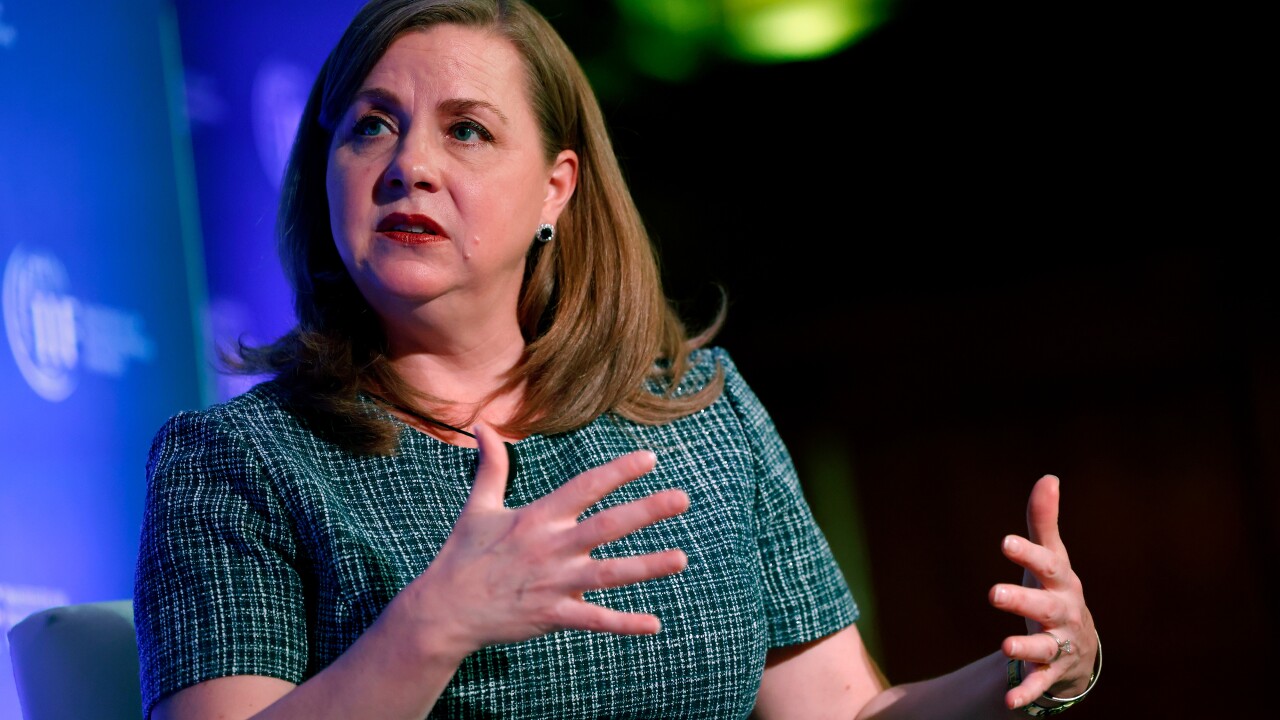For all the recent dangers E-Loan Inc. has faced, there is at least one the company knows it can avoid.
"We share a line with a women's prison, so apparently our power won't go down," said Chris Larsen, co-founder and chief executive officer of E-Loan. "If your power is attached to a hospital, police station, fire station, or prison, you're on a line they won't cut."
That suffices as good news for investors in E-Loan, especially since its Dublin, Calif., headquarters is near the epicenter of the California power crisis and last year's high-tech implosion.
The company took several very public licks in 2000 - from the equity markets' punishing its stock to critics of online lending saying its business model would never work.
But Mr. Larsen, 40, remains confident - even cocky - about E-Loan's prospects.
"We're always going to be a consumer company, and we take a hit for that sometimes," he acknowledged during a lengthy interview. "But in the long term, by sticking to it, we're going to be the best product and the best-known brand. There's no question in my mind that we're in the right business with the right strategy."
That strategy, however, has proven expensive.
Though the company's losses slowed somewhat in the fourth quarter, to $6.5 million, based on pro forma figures, it lost more than $20 million in the quarter when noncash charges are included, and $91 million for the year. When added to 1999's loss, E-Loan has bled almost $165 million of red ink since going public. An E-Loan official stressed that most of the losses are noncash charges, such as amortization expenses related to acquisitions and stock warrants.
Its shares have not fared much better. After peaking at $63 shortly after its initial public offering in June 1999, E-Loan's share price plummeted to as little as 38 cents in late December; its shares were trading at $2.3125 at midday Tuesday.
Mr. Larsen's response? Hard times are the price of admission.
Many of his competitors did not raise enough cash to get through the technology shakeout, he said, and in the current environment, those that do not have the resources to reach profitability are finished.
"The early period was characterized by, 'Get above the fray,' and 'Get your name out there,' because it was a land grab, and I think that was the right strategy in those times," said Mr. Larsen. "But in this time, it's 'show me the results.' The capital markets are unfriendly and uncooperative to anything that's not solid."
Though many observers say that branding is nearly impossible in the lending business, Tom Reddin, chief operating officer of the Charlotte, N.C.-based LendingTree Inc. (which, along with E-Loan, is among the best known brands in the business), said he agrees with Mr. Larsen that branding works.
Though LendingTree is a marketplace that connects lenders and borrowers and E-Loan is a direct lender (E-Loan is in fact a lender on LendingTree's exchange), the two companies are often compared for their similar marketing strategies and youthful, brash chief executives. Douglas R. Lebda, LendingTree's CEO, is 31.
LendingTree spent $40 million on marketing and branding last year, including an extensive television campaign - and lost $52.7 million in the first three quarters. But Mr. Reddin said the recognition that LendingTree achieved was worth every penny.
"If you have a unique, highly differentiated model, you can brand it," he said. "Our costs for acquiring a consumer are less expensive than they were two years ago because we've built the brand and people know what it is." Mr. Reddin said that after its first barrage of 30-second TV commercials, LendingTree is now in more of a "reminder mode," running less expensive, 15-second spots.
"The cost to acquire a consumer is king," Mr. Reddin added.
Mr. Larsen agreed, saying that E-Loan's cost of acquisition as a percentage of revenues has dropped to 47%, moving the company toward its goal of 30%. "That's how we win the game," he said, adding that E-Loan has reduced its marketing expenditures to about $5 million a quarter and expects to remain there.
"People who have looked at the space and said, 'This is never going to work,' attacked us on acquisition costs and operating costs," he said. "But given the progress we've made, we've put away a lot of that criticism."
Mr. Larsen said his company's strong relationship with Charles Schwab & Co. has been especially important in keeping E-Loan above water. Schwab invested $10 million in E-Loan last June, and Schwab executives meet regularly with E-Loan to give business advice.
"In some ways they're really a role model for the company," said Mr. Larsen. "They give us tremendous support from the very top of the organization."
Schwab had a vision that was relentlessly pro-consumer and stuck with it, Mr. Larsen said. "They ended dominating an industry, and in a way that is hugely respected and has resulted in one of the strongest brands not only in financial services but in the country."
Mr. Larsen said he is trying to bring Schwab's approach in asset management to the debt market.
Toward that end, he said, E-Loan has added debt management to its products to help consumers understand credit and debt.
In addition, he said, the company fought for public disclosure of credit scores last year, and it is now seeking legislation to force auto dealer disclosure of lending and finance fees.
Mr. Larsen said he remains confident that buying mortgages online will someday be as common as trading stock there. Changes in the mortgage process will make borrowing much better suited to the Internet, he added.
"When you're selling dog food on the Internet, the dog food isn't changing - you've still got to ship it, and 10 years from now you're still going to have to ship it," he said. "When you look at the mortgage product, every quarter the thing is getting more and more purely electronic."
From Our Archive





